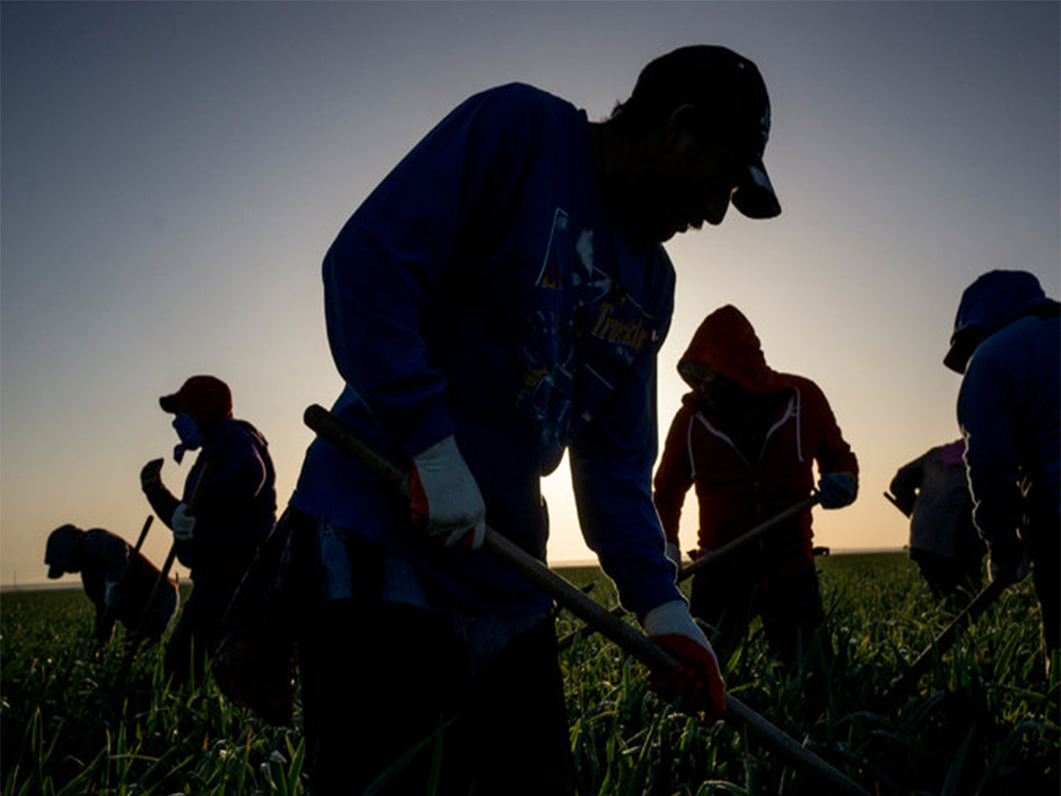While the H2A ag worker and H2B non-ag visa programs draw heat from some quarters, a Washington-based non-profit is striving to ease some of the angst by providing a conduit between employers and government.
Dan Fazio, director of the WA Farm Labor Association, or WAFLA, spoke to Oregon and Idaho onion shippers in mid-March, explaining WAFLA’s plans to expand its H2A and H2B intermediary services to those two states.
The services are described on the Lacey, WA, organization’s web site at http://wafla.org/H-2A-Programs. “H-2A is a costly program, and the cost associated can hinder program participation,” the site says. “Wafla has developed three different programs in efforts to reduce the financial burden to employers.”
One program is a shared worker/contract model. “The shared worker or shared contract model works when there are multiple growers,” the site explains. “In order to use the shared contract model, the employers listed on the contract must have one common crop, and they must have the same period of need. The shared contract model allows employers to bring in a larger number of workers on the same contract and save application costs. This model also allows all the employers listed on the contract to share workers amongst themselves, if needed.”
Another is the sequential contracts model, which “creates substantial cost savings, but also requires additional planning by the employers involved. In the sequential model, there are multiple periods of need, and workers transfer between employers accordingly. This model is especially beneficial to growers with very short periods of need. The sequential model provides employers the workers they need, for the period of time they need, and does not bind employers to long periods of time under the required higher wage rate.”
And the third H2A program is the packing house model.
“Packing houses are indirectly involved in finding labor for their growers by spreading the word about the need for workers throughout the areas they cover,” the site says, asking, “What if your packing house did more?” It goes on to say, “In 2014 an innovative packing house took it upon themselves to help their growers navigate the complex H-2A program. This packing house facilitated the H-2A process for the growers involved by helping them locate licensed housing, providing a contact person to work with wafla, and keeping employers informed on the status of the application and their requirements. The packing house model is a version of the shared contract model–the differences are that workers stay at the same housing, and the packing house acts as a liaison for sharing workers amongst each of the growers listed in the contract.”
WAFLA has seen success in these areas, and under Fazio’s direction, the organization has eased the burden of paperwork and long waits on business owners seeking seasonal employees.
During the shippers meeting Fazio said that because labor is becoming increasing more difficult to find, programs like the ones WAFLA provides are smart choices because of the workers they are able to secure. He said in general the workers from Mexico who participate in the program are more reliable and have an increased average of returning for subsequent seasons.
He added that the strict rules put on the workers, along with consistent help from WAFLA field personnel, result in more on-time starts, better job performance and less absenteeism, all of which translates to less turnover.
Fazio noted that there are a number of these types of agencies across the country, but WAFLA prides itself on its non-profit status. That, he said, gives participating employers a cost savings. Also, WAFLA says its employer members and guest workers have been in general happy with the implementation of the program, which is not always the case as referenced in some headlines across the country.
One such less-than-happy with H2A/H2B programs was published recently on http://naturalresourcereport.com/2016/04/personal-story-behind-farm-labor-shortage/ with a byline by American Farm Bureau Federation. The story, entitled “Personal story behind farm labor shortage,” claims that farm labor is, in short, a tough row to hoe for employers.
“Farm work requires long days in often undesirable weather conditions and comes with an unpredictable schedule. It requires ongoing training, knowledge of crops and how they grow, plus many hours of twisting, turning, bending, climbing, shoveling and heavy lifting. There’s no way around it: It is labor and most Americans do not want to do it,” the post says.
Writer Katie Heger says her family’s farm in North Dakota “has run into a worker shortage for the past 13 years,” in spite of ads running in local papers and word of mouth to neighbors.
“We have been unable to hire any of the people who respond, and we are left each year looking to hire qualified foreign seasonal labor through the H2A, ag worker visa program, and the H2B visa program,” the post continues. The author says that the process is “cumbersome, untimely, expensive, uncertain, and ultimately lacks an understanding of agriculture and our labor needs. Over the years, the amount of personal, business and farm production information we have to present to prove our need for labor increases. But the speed of getting visas cleared does not.”
Red tape increases, and although the farm starts the application process months in advance, there is a long “wait for someone at the Department of Labor–with little to no knowledge of farming in my region–to approve, deny or delay a request.”
A more detailed description of the program’s shortcomings is provided, with the upshot being, “A revised ag worker visa program is desperately needed and needs to include options for year-round employment, renewability of employment, and should account for reasonable wages, manageable expenses and additional benefits like housing, transportation and meals. Foreign labor is not just a need for select states or specific sectors of farming: it is a need for all. I begin my farm’s journey into 2016, hopeful that change will be made and that we will be able to hire a dependable, willing workforce.”


